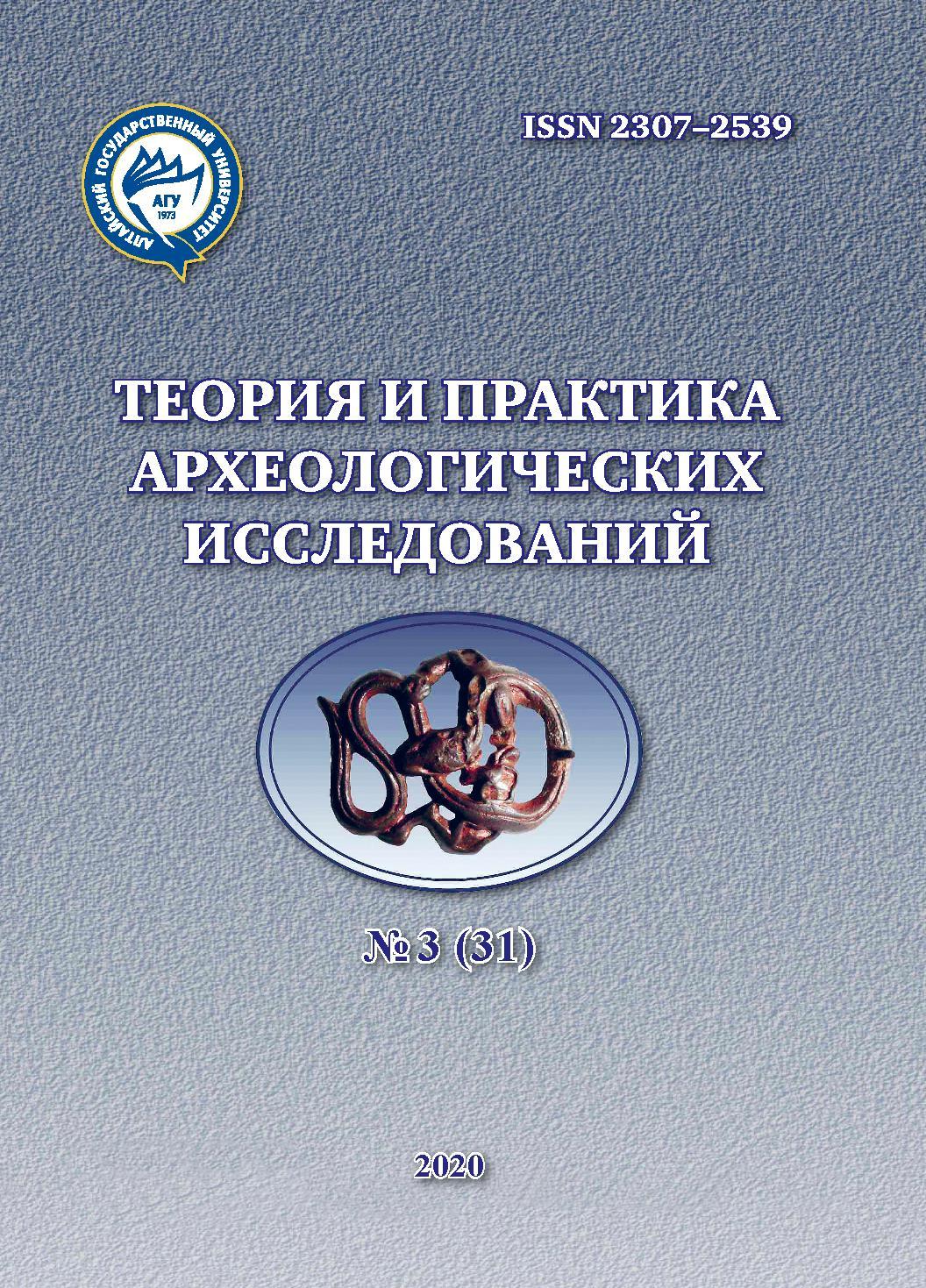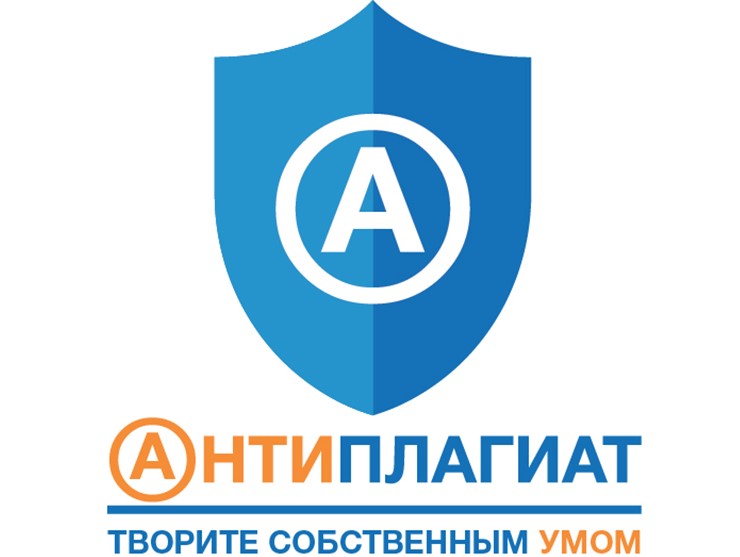CRUCIBLES OF THE 6th – 7th CENTURIES AD FROM THE IMENKOVO CULTURE
Abstract
For the first time, the article examines the crucibles of the Imenkovo culture – special devices for melting non-ferrous metals. They are most characteristic of jewelry and are one of the important signs of its existence in the settlements. They are known on the sites of the Imenkovo Culture, where unbroken products are rarely found. At the same time fragments do not always provide an opportunity to restore shape. The collection of crucibles from the Tetyushy II hillfort in Tatarstan, in the amount of 49 pieces, includes both whole crucibles and large fragments from which it is possible to restore the original shape. It became the basis to develop a typology of these artifacts. The stratigraphy of the Tetyushy II hillfort and the finds of crucibles in closed complexes with dating items made it possible to date crucibles of different types. It was found that there were several basic forms of crucibles – in the form of a cone and in the form of a cylinder. Moreover, they had a different capacity. The author believes that large crucibles were needed for the manufacture of bronze ingots. Smaller crucibles were used for casting products. It was noted that only crucibles of small size and cylindrical shape had a drain. Most crucibles did not have it. A separate type are crucibles in the form of a spoon with a handle. They are most likely used in the manufacture of tin or lead products. It was established that the most popular crucibles in the Imenkovo culture were medium-sized crucibles (height 6 cm, diameter – 5 cm) of conical shape (1: 1.2 ratio) with a massive pointed bottom, 2–3 cm thick, without drainage. Metal melting in crucibles was carried out in special pits, which were studied at the Tetyushy II hillfort. There were also several workshops where jewelers worked. The workshops contained the largest number of fragments of crucibles and the traces of the manufacturing process. These are metal drops, copper plates intended for remelting, as well as solid pieces of glass mass. Thus, for the first time the the main types of crucibles of the Imenkovo culture have been identified, their dates and the nature of the process of melting metal in crucibles have been established.
Downloads
Metrics
References
Vyazov L.A., Semykin Yu.A. Gorodishche i selishche Novaya Beden’ga: epoha Velikogo pereseleniya narodov v Ul’yanovskom Predvolzh’e [The Novaya Bedenga Settlement: the Era of the Great Migration of Peoples in the Ulyanovsk Pre-Volga Region]. Ul’yanovsk : NII istorii i kul’tury, 2016. 227 p. (Arheologiya Simbirskogo Povolzh’ya. Vyp. 1). [Series: Archaeology of the Simbirsk Volga. Issue 1].
Goldina E.V. Busy mogil’nikov nevolinskoj kul’tury (konec IV – IX v.) [The Beads of the Burial Grounds of the Nevolyn Culture (end of IV – IX centuries)]. Izhevsk : Izd-vo Udmurt. Un-ta, 2010. 264 p.
(Materialy i issledovaniya Kamsko-Vyatskoj arheologicheskoj ekspedicii. T. 6) [Series: Materials and Research of the Kama-Vyatka Archaeological Expedition. Vol. 6].
Goldina R.D., Perevozchikova S.A. O datirovke i hronologii Verh-Sainskogo mogil’nika nevolinskoy kul’tury (VI – nachalo IX v. n.e.) [About the Dating and Chronology of the Verkh-Sainsk Burial Ground of the Nevolyn Culture (the 6th – beginning of 9th Century AD)]. Drevnosti Prikam’ya epohi zheleza (VI v. do n.e. – XV v. n.e.) [Antiquities of the Kama Region of the Iron Age (the 6th century BC – the 15th century AD)]. Izhevsk : Udmurtskij universitet, 2012. Pp. 321–275 (Materialy i issledovaniya Kamsko-Vyatskoj arkeologicheskoj ekspedicii. T. 25) [Series: Materials and Research of the Kama-Vyatka Archaeological Expedition. Vol. 25].
Kazakov E.P. Tetiushskii mogil’nik azelinskoi kul’tury [Tetyushi Burial Ground of Azelino Culture] Materialy i issledovaniia po srednevekovoi arkheologii Vostochnoi Evropy [Materials and Research into Medieval Archaeology of Eastern Europe]. Kazan’: Shkola, 2009. Pp. 31–44.
Klyuchnikova R.M., Matveeva G.I. Selishche Osh-Pando-Ner’ [Settlement Osh-Pando-Ner]. Drevnosti Srednego Povolzh’ya [Antiquities of the Middle Volga]. Kuibyshev : Izd-vo Kujbyshev. un-ta, 1985. Pp. 131–155.
Krenke N.A. D’yakovo gorodishche: kul’tura naseleniya bassejna Moskvy-reki v I tys. do n.e. – I tys. n.e. [The Dyakovo Hillfort: the Culture of the Population of the River Moskva Basin in the 1st Millennium BC – the 1st I millennium AC]. M. : IA RAN, 2011. 548 p.
Kuzminyh S.V. Metallurgiya Volgo-Kam’ya v rannem zheleznom veke. Med’ i bronza [Metallurgy of the Volga-Kama in the Early Iron Age. Copper and Bronze]. M. : Nauka, 1983. 257 p.
Matveeva G.I. Srednee Povolzh’e v IV–VII vv.: imen’kovskaya kul’tura [The Middle Volga Region in the 4th – 7th Centuries: Imenkovskaya Culture. Tutorial]. Samara : Izd-vo Samarskogo un-ta, 2003. 160 p.
Matveeva G.I., Bogachev A.V., Nabokov A.V. Perevolokskoe gorodishche [The Perevolokskoe Hillfort]. 40 let Srednevolzhskoj arheologicheskoj ekspedicii [40 Years of the Middle Volga Archaeological Expedition]. Samara : Ofort, 2010. Pp. 231–242 (Kraevedcheskie zapiski SOIKM. Vyp. XV) [Series: Local History Notes SOIKM. Issue XV].
Muhamadiev A.G. Drevnie monety Povolzh’ya. [Ancient Coins of the Volga Region]. Kazan’ : Tatarskoe knizhnoe izdatel’stvo, 1990. 192 p.
Ostanina T.I. Kirbinskoe gorodishche na r. Meshe [Kirbi Hillfort on the Mesha River]. Finno-Ugrica. 2002. №1 (5–6). Pp. 15–43.
Ostanina T.I., Kannunikova O.M., Stepanov V.P., Nikitin A.B. Kuzebaevskij klad yuvelira VII v. kak istoricheskij istochnik [Kuzebaevsky Teasure of a Jeweler of the 7th Century as a Historical Source]. Izhevsk : Udmurtia, 2011. 218 p.
Patrushev V.S. Mogil’niki Volgo-Kam’ya ranneanan’inskogo vremeni [The Burial Grounds of the Volga-Kama Area of the Early Ananino Era]. Kazan’ : Foliant, 2011. 276 p.
Rudenko K.A. Tetyushskoe II gorodishche v Tatarstane [Tetyushskoe II Settlement in Tatarstan]. Kazan’: Zaman, 2010. 152 p.
Rudenko K.A. Drevnie Tetyushi. Arheologicheskoe issledovanie [Ancient Tetyushi. Archaeological Research]. Kazan’ : Zaman, 2011. 144 p.
Rudenko K.A. Stratigrafiya pamyatnikov imen’kovskoj kul’tury Kazanskogo Povolzh’ya [Stratigraphy of the Sites of the Imenkovskaya Culture of the Kazan Volga Region]. Teoriya i praktika arheologicheskih issledovanij [Theory and Practice of Archaeological Research]. 2018. №2 (22). Pp. 80–98. DOI: https://doi.org/10.14258/tpai(2018)2(22).-05.
Rudenko K.A. Metallurgicheskoe proizvodstvo VI–VII vv. n.e. na Tetyushskom II gorodishche v Tatarstane [Metallurgical Manufacturing of the 6th – 7th Centuries AD on the Tetushi II Hillfort in Tatarstan]. Teoriia i praktika arheologicheskih issledovanij [Theory and Practice of Archaeological Research]. 2019. №1 (25). Pp. 16–28. DOI: 10.14258/tpai(2019)1(25).-02.
Saprykina I.A. Proizvodstvennyj yuvelirnyj kompleks d’yakovskoj kul’tury na gorodishche Nastas’ino [The Production Jewelry Complex of the Dyakovo Culture on the Nastasino Hillfort]. Arheologiya Podmoskov’ya. Materialy nauchnogo seminara [The Archaeology of the Moscow Region. Proceedings of the Scientific Seminar]. M. : IA RAN, 2004. Pp. 136–141.
Semykin Yu.A. Materialy k istorii metallurgii zheleza epohi srednevekov’ya Srednego Povolzh’ya [Materials on the History of the Iron Metallurgy of the Middle Ages of the Middle Volga]. Kul’tury Evrazijskih stepej vtoroj poloviny I tysyacheletiya n.e. (voprosy hronologii). [Cultures of the Eurasian Steppes of the Second Half of the 1st Millennium AD (chronology issues)]. Samara : SOIKM, 1998. Pp. 167–184.
Sidorov V.N., Starostin P.N. Ostatki rannesrednevekovyh litejnyh masterskih Shcherbet’skogo poseleniya [Remnants of Early Medieval Foundry Workshops of the Scherbet Settlement]. Sovetskaya arheologiya [Soviet Archaeology]. 1970. №4. Pp. 233–237.
Starostin P.N. Pamyatniki imen’kovskoj kul’tury [Sites of te Imenkovo Culture]. M. : Nauka, 1967. 100 p. (Series: SAI. Issue D1-32).
Starostin P.N. Maklasheevskoe II gorodishche imen’kovskoj kul’tury [Maklasheevka II Hillfort of the Imenkovo Culture]. Trudy Kamskoj arheologicheskoj jekspedicii. Vyp. IV [Proceedings of the Kama Archaeological Expedition. Issue IV]. Perm’, 1968. Pp. 221–229 (Uchenye zapiski PGU, №191) [Series: Scientific Notes of Perm State University. № 191].
Starostin P.N. Raboty na Troicko-Urajskom I gorodishche v 1973 g. [The Work on the Troitsko-Uraisky I Hillfort in 1973]. Drevnosti Volgo-Kam’ya [The Volga-Kamya Antiquities]. Kazan’ : IYaLI KFAN, 1977. Pp. 31–41.
Starostin P.N. Rannesrednevekovoe poselenie “Kurgan” [Early Medieval Settlement “Kurgan”]. Srednevekovye arheologicheskie pamyatniki Tatarii [Medieval Archaeological Sites of Tatarstan]. Kazan’ : IYaLI KFAN, 1983. Pp. 6–19.
Starostin P.N. Rozhdestvenskij V mogil’nik [Rozhdestvensky V Burial Ground]. Kazan’ : II ANT, 2009. 144 p. (Arheologiya Evrazijskih stepej. Vyp. 9). [Series: Archaeology of the Eurasian Steppes. Issue 9].
Starostin P.N., Kuz’minyh S.V. Pogrebenie litejshchicy iz Pyatogo Rozhdestvenskogo mogil’nika [The Burial of a Foundry from the Fifth Rozhdestvensky Burial Ground]. Voprosy Drevnej i Srednevekovoj arheologii Vostochnoj Evropy [Questions of Ancient and Medieval Archaeology of Eastern Europe]. M.: Nauka, 1978. Pp. 168–172.
Stashenkov D.A. Metallurgicheskij kompleks Novinkovskogo I selishcha na Samarskoj Luke [Metallurgical Complex of Novinkovsky I Settlement on Samarskaya Luka]. Materialy i issledovaniya po srednevekovoj arheologii Vostochnoj Evropy [Materials and Studies on Medieval Archaeology of Eastern Europe]. Kazan’ : Shkola, 2009. Pp. 76–88.
Stepanov P.D. Osh Pando [Osh Pando]. Saransk : Mordovskoe knizhnoe izdatel’stvo, 1967. 212 p.
Stolyarova E.K. Steklyannye busy Tetyushskogo II gorodishcha [Glass Beads of Tetyushy II Hillfort]. Materialy i issledovaniya po srednevekovoj arheologii Vostochnoj Evropy [Materials and Studies on Medieval Archaeology of Eastern Europe]. Kazan’ : Shkola, 2009. Pp. 66–75.
Tavlinceva E.Yu., Lopatina O.A. Tigli i litejnye formy Rostislavl’skogo gorodishcha [Crucibles and Moulds Discovered at Rostislavsky Settlement]. Arheologiia Podmoskov’ya. Materialy nauchnogo seminara. Vyp. 5 [The Archaeology of the Moscow Region. Proceedings of the Scientific Seminar. Issue 5]. M.: IA RAN, 2009. Pp. 455–475.
Halikov A.H. Volgo-Kam’e v nachale epohi rannego zheleza (VIII–VI vv. do n.e.) [Volga-Kamye at the Beginning of the Early Iron Age (the 8th – 6th Centuries BC)]. M. : Nauka, 1977. 264 p.
Theory and Practice of Archaeological Research is a golden publisher, as we allow self-archiving, but most importantly we are fully transparent about your rights.
Authors may present and discuss their findings ahead of publication: at biological or scientific conferences, on preprint servers, in public databases, and in blogs, wikis, tweets, and other informal communication channels.
Theory and Practice of Archaeological Research allows authors to deposit manuscripts (currently under review or those for intended submission to ABS) in non-commercial, pre-print servers such as ArXiv.
Authors who publish with this journal agree to the following terms:
- Authors retain copyright and grant the journal right of first publication with the work simultaneously licensed under a Creative Commons Attribution License (CC BY 4.0) that allows others to share the work with an acknowledgement of the work's authorship and initial publication in this journal.
- Authors are able to enter into separate, additional contractual arrangements for the non-exclusive distribution of the journal's published version of the work (e.g., post it to an institutional repository or publish it in a book), with an acknowledgement of its initial publication in this journal.
- Authors are permitted and encouraged to post their work online (e.g., in institutional repositories or on their website) prior to and during the submission process, as it can lead to productive exchanges, as well as earlier and greater citation of published work (See The Effect of Open Access).








2.jpg)




